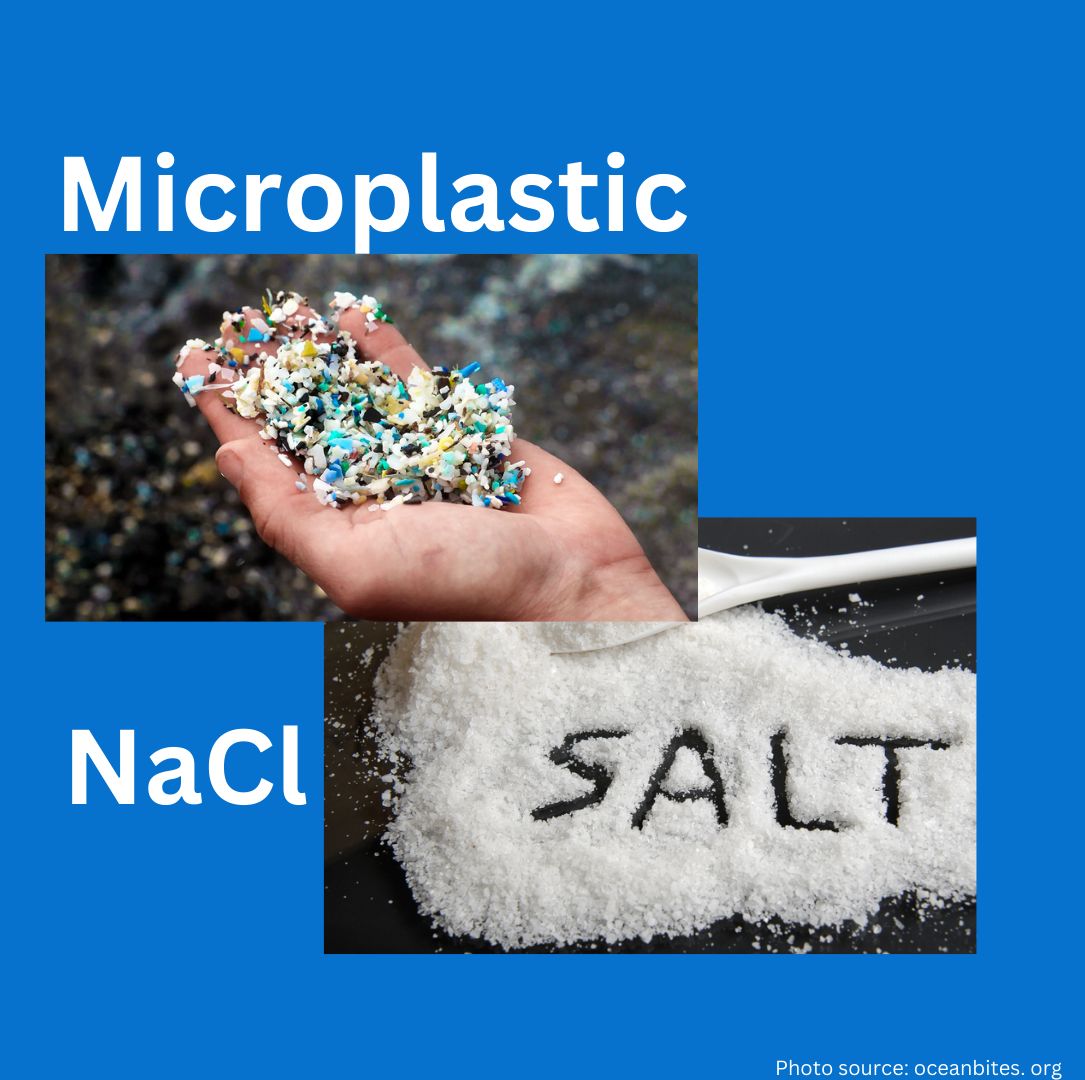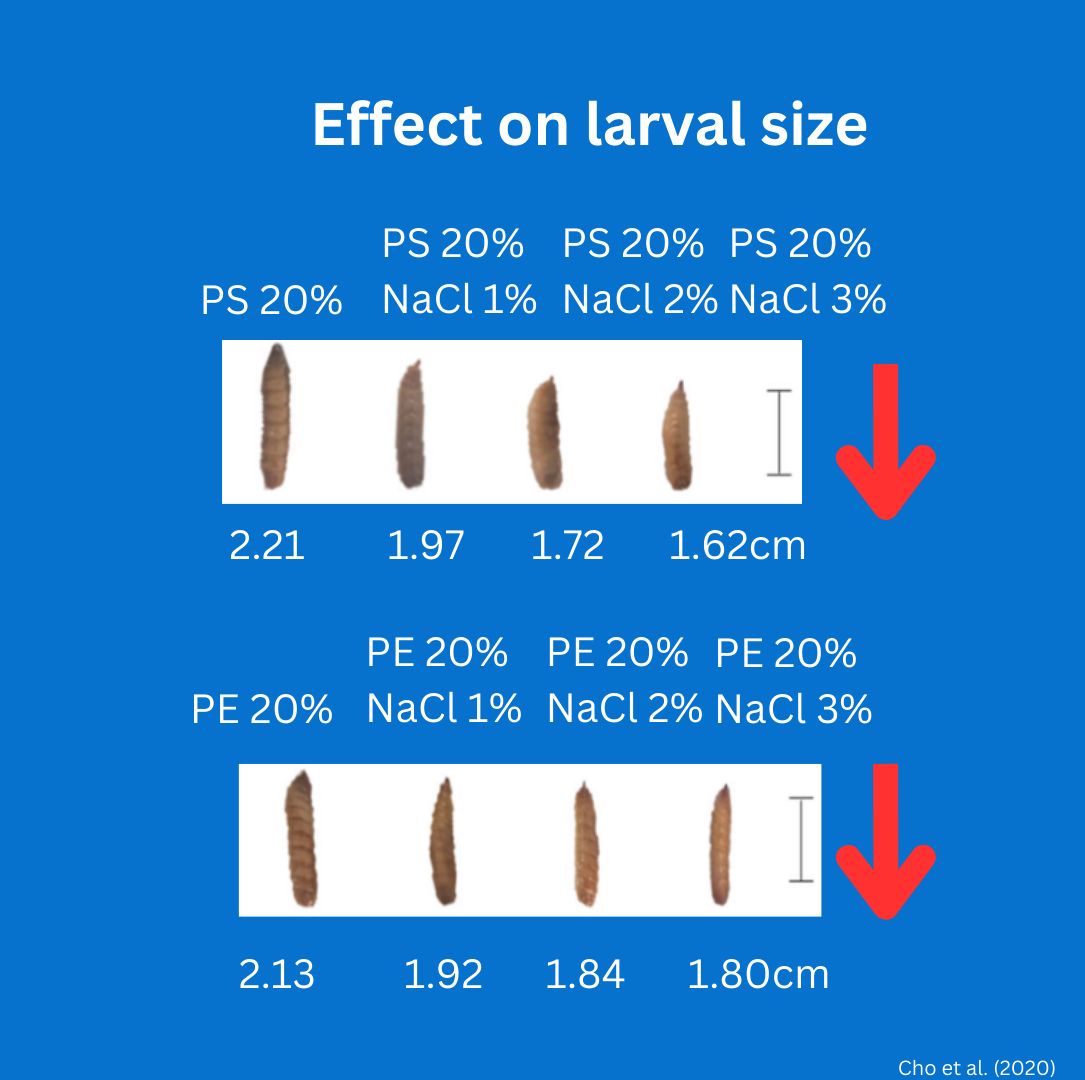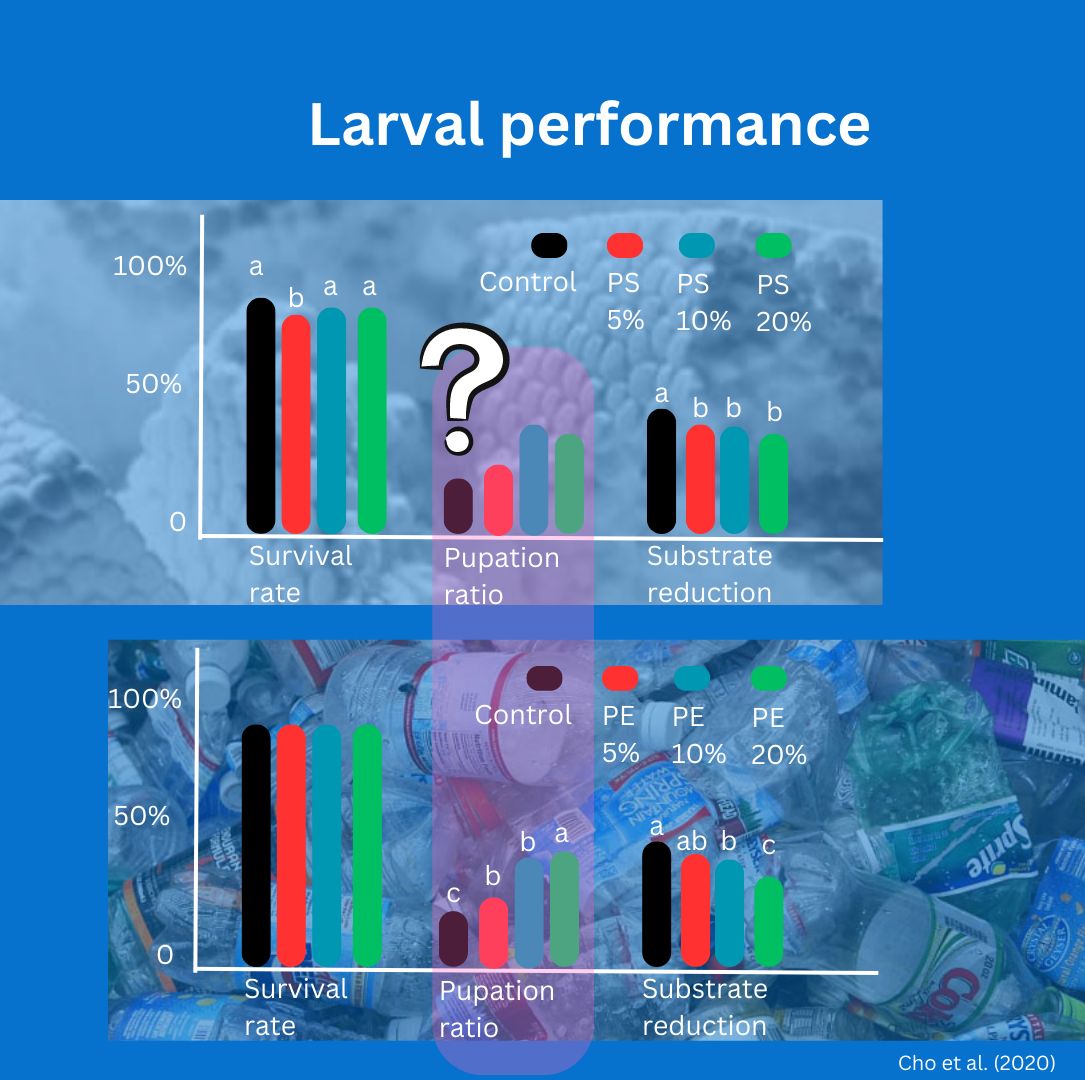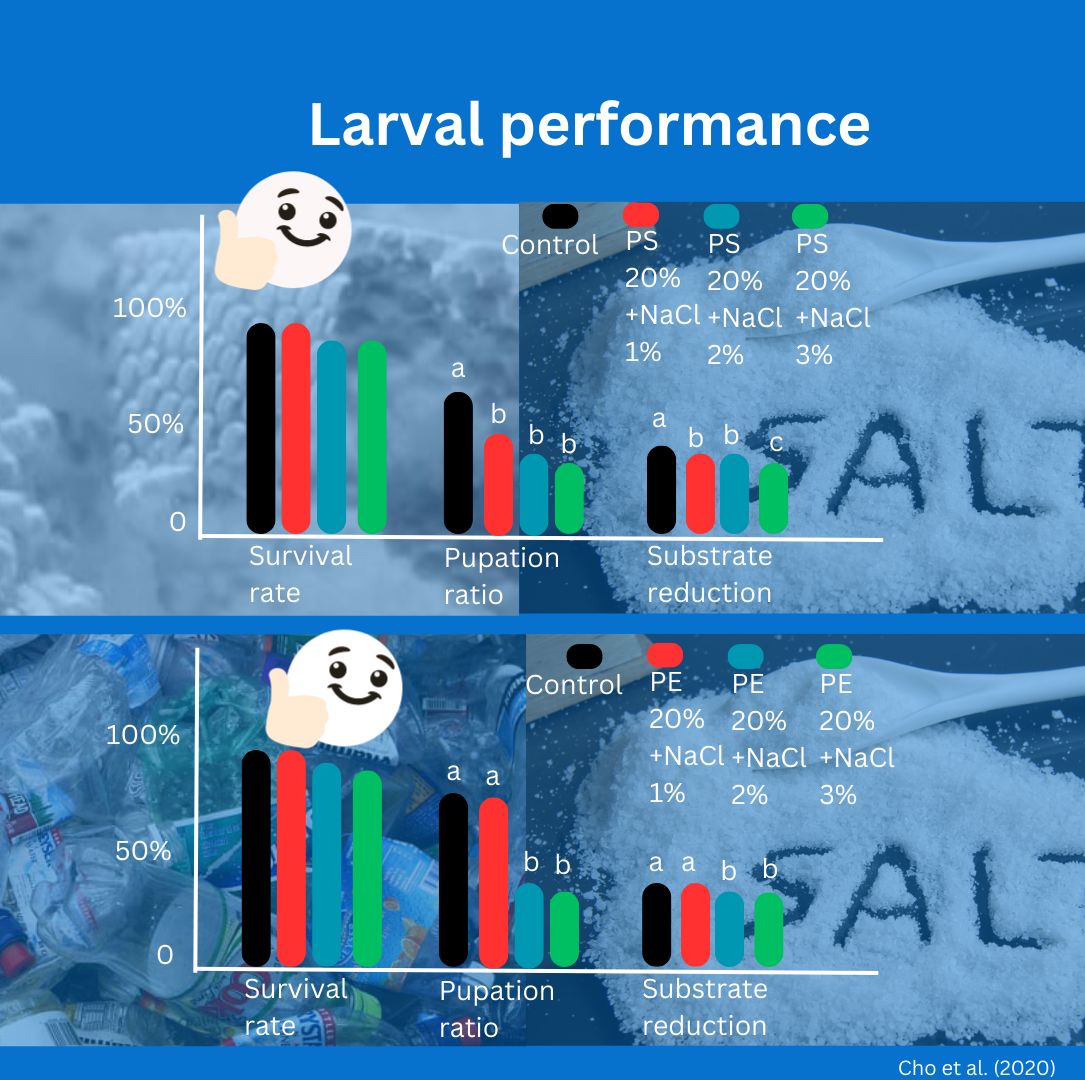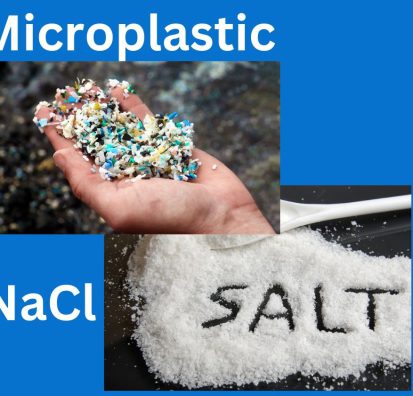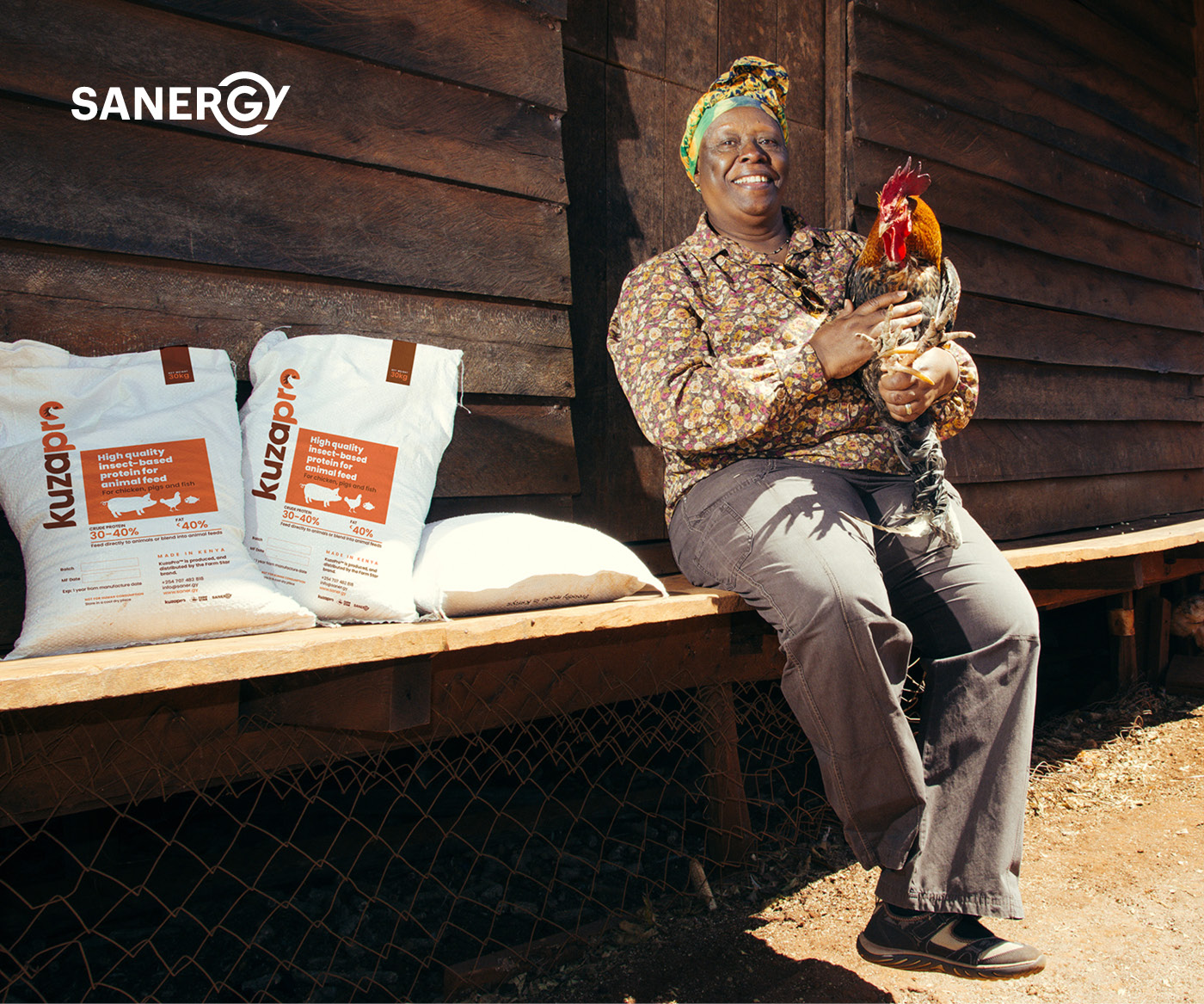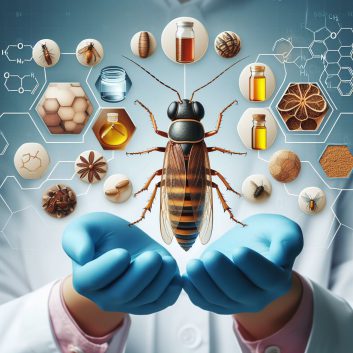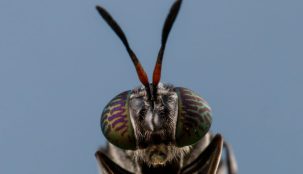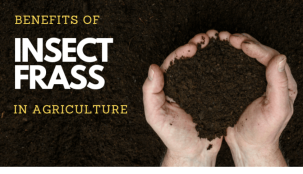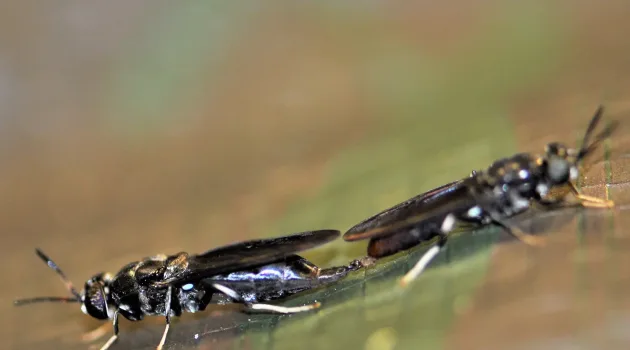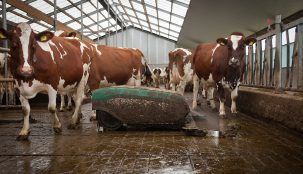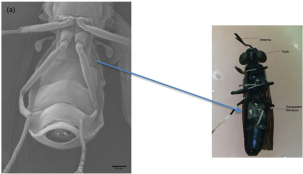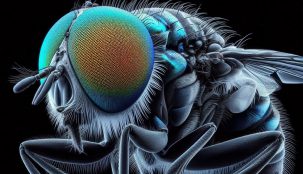Microplastic & Salt
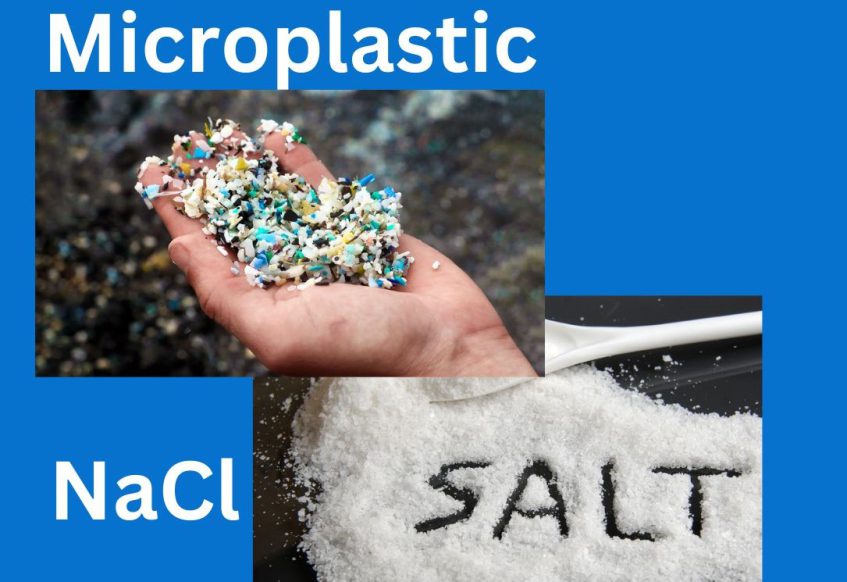
#Doyouknow the effects of #microplastics and #salt (NaCl) on #BSFL survival rates, pupation ratio, and substrate reduction rate.
#Polyethylene (PE) and #Polystyrene (PS) are the primary component of disposable bags and containers, and as widely used in food packaging, they can occur in food waste. Among diverse types of plastics, their effects of microplastics (plastic fragments that are <5 mm in length) on Black Soldier fly larvae survive, pupation, and substrate reduction haven’t been examined.
Besides, inorganic materials such as #salt (NaCl) can be present in high concentrations, and this can reduce the efficiency of food waste bioconversion by Black Soldier Fly larvae. A study evaluated 1%, 2%, 3% NaCl content (based on fresh weight) on BSFL bioconversion efficiency; have a look here DOI: 10.1186/s41610-020-0148-x
Regardless of the types of microplastics, larval growth, pupation ratio, and substrate reduction rates are reduced by NaCl. However, no adverse effect of microplastics and NaCl on survival rate of BSFL is observed. Although the substrate reduction rate is lower, it is likely that BSFL may be applied in the treatment of food waste containing microplastics and high salinity (i.e., max 3% of fresh weight)
One thing is worth mentioning that the higher pupation ratio (i.e., prepupae/all survivor larvae) in microplastic-treated groups compared to the control (i.e., without microplastic, only food waste) after harvesting on the same day (24 days rearing). This result means that BSF larvae develop faster in the food waste that’s contaminated with microplastic. According to Cho et al. (2020) assumption, microplastic may act as an endocrine (e.g., internal glands which secrete hormones) disruptor and thus affect the physiology of BSF larvae.
#microplastics #plastic #blacksoldierfly #physiology
